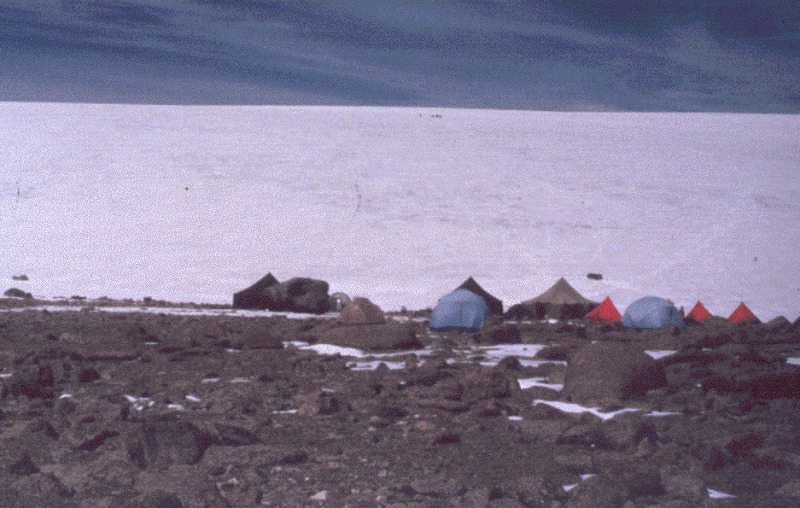Dunde Ice Cap
China
Project Overview
The Dunde Ice Cap (38o06'N; 96o24'E; 5325 masl) is located on the northeastern margin of the Q-T Plateau (see photo). Three ice cores to bedrock from the Dunde ice cap on the north-central Qinghai-Tibetan Plateau of China provide a detailed record of Holocene and Wisconsin-Würm late glacial stage (LGS) climate changes in the subtropics. The records reveal that LGS conditions were apparently colder, wetter and dustier than Holocene conditions. The LGS part of the cores is characterized by more negative δ18O ratios, increased dust content, decreased soluble aerosol concentrations, and reduced ice crystal sizes than the Holocene part. These changes occurred rapidly ~10,000 years ago. In addition, the last 50 years appears to have been the warmest period in the Holocene (e.g., the last 10,000 years).
Selected publications:
Thompson, L.G., E. Mosley-Thompson and 8 others. 1989. Holocene-Late Pleistocene climatic ice core records from Qinghai-Tibetan Plateau. Science, 246(4929), 474-477.PDF
Thompson, L.G., E. Mosley-Thompson, and 8 others. 1990. Glacial Stage ice core records from the subtropical Dunde ice cap, China. Annals of Glaciology, 14, 288-297. PDF
Thompson, L.G., E. Mosley-Thompson and five others. 1993. " Recent warming": ice core evidence from tropical ice cores with emphasis upon Central Asia. Global and Planetary Change, 7, 145-156. PDF
Feng, Z., L.G. Thompson, E. Mosley-Thompson, J. Dai, M.E. Davis and P.N. Lin. 1993. Temporal and spatial variations of climate in China during the past 10,000 years. The Holocene, 3(2), 174-180. PDF
Lin, P.N., L.G. Thompson, M.E. Davis and E. Mosley-Thompson. 1995. 1000 years of climatic change in China: Ice core δ18O evidence. Annals of Glaciology, 21, 189-195. PDF

